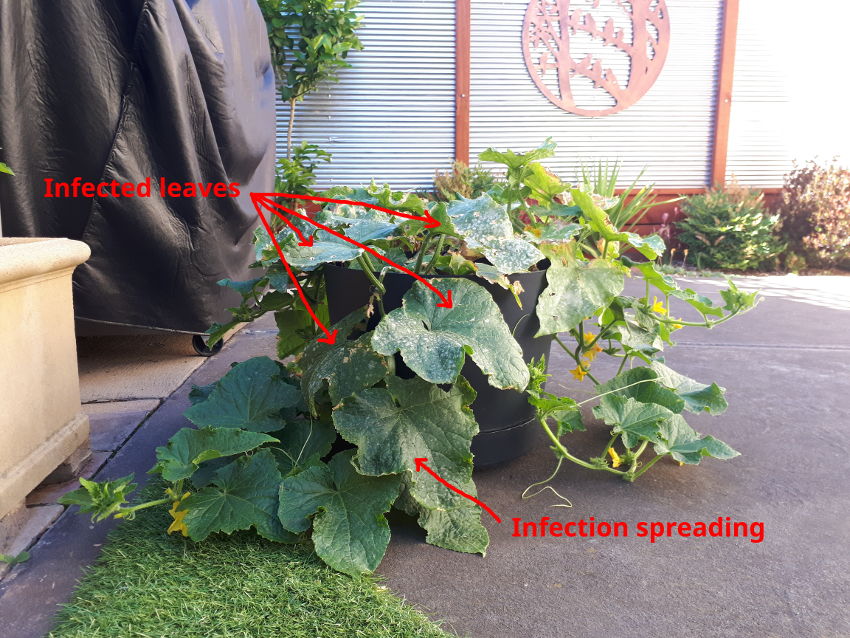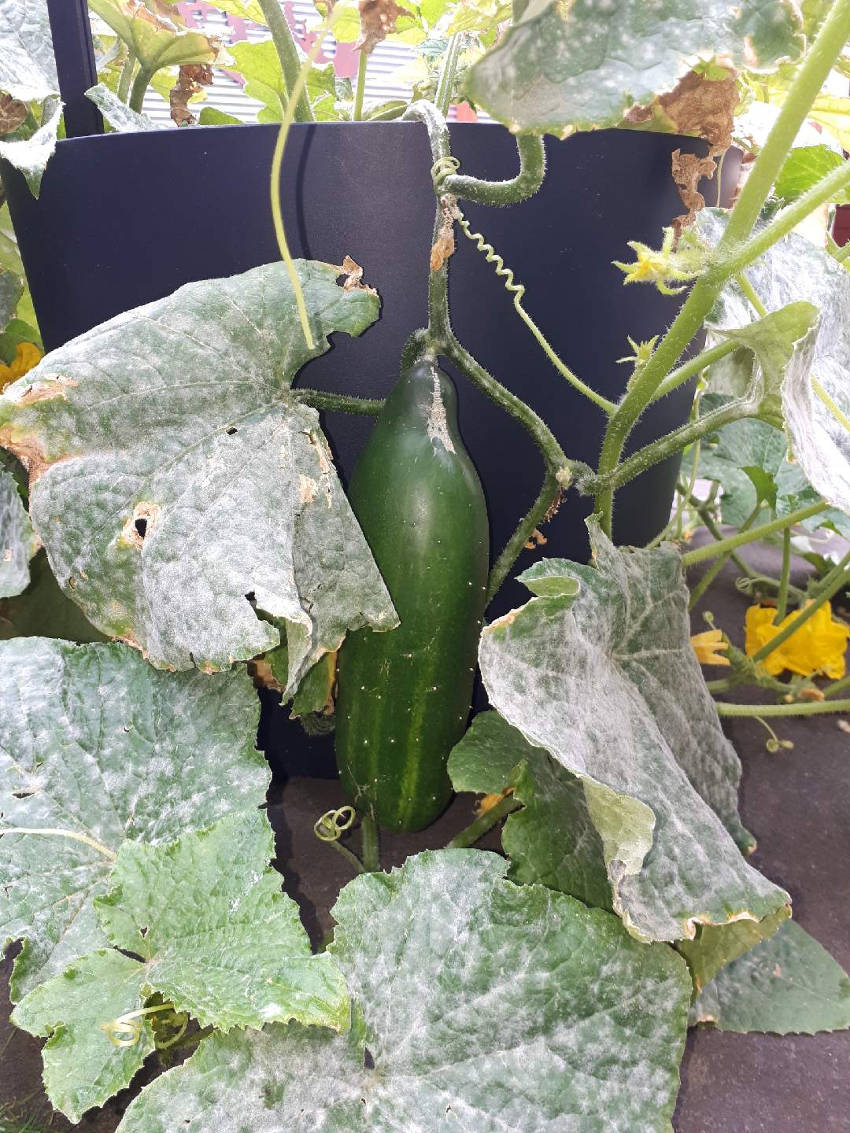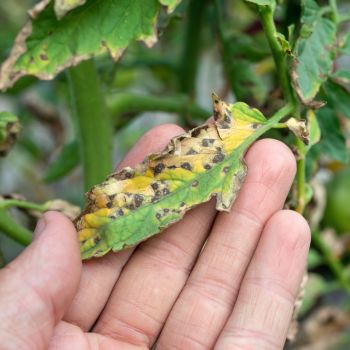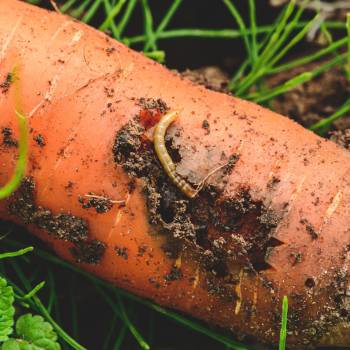The cucurbit family offers some of the veggie gardener's most generous friends. Zucchini, pumpkin, cucumber and squashes are easy to grow and extremely productive, racing away to provide lush foliage, striking flowers, and masses of fruit.
However, all the species in this family can fall prey to a common fungal infection known as powdery mildew. This first shows up as white spots on the leaves, which if left untreated eventually spread across the entire plant.
Faced with a full-blown mildew infection for the first time, it's natural for a cucurbit grower to feel worried. The good news is that the problem is rarely fatal for the plant, although it usually reduces yields.
It's also fairly easy to discourage the infection from taking hold. And if it does, there are several reliable ways to reduce its impact.
What Causes Powdery Mildew?
Powdery mildew appears when fungal spores settle on a plant and start to reproduce. These spores are always present in the air, but whether they spark off a serious infection or not depends mainly on growing conditions.
Here are the main ways to prevent a major infection from developing.
Careful Watering - The spores prefer to reproduce in humid air. However, to complicate matters, they also thrive on drier, weaker leaves. This means getting your cucurbit watering technique correct.
Water your plants generously at the soil level rather than from above, so they stay fully hydrated without liquid misting around the leaves. Adding a good layer of organic mulch will help the process along, channelling water to the roots rather than letting it evaporate into the air.
Air Circulation - Also make sure there's adequate air circulation around your plants to stop humidity from building up. Don't plant cucurbits too close together, and keep them out of enclosed, highly sheltered areas.
Pick a Sunny Spot - Growing your plants in a sunny location is perhaps the most important point. The heat of the sun burns away humidity, while also raising temperatures above the moderate level that mildew spores prefer.
Also, plenty of sun will help give your plants extra vigour to withstand an infection's damage.
Soil Quality - Adding plenty of rich organic matter to your soil will also help your plants grow strongly and cope with infection. However, avoid using too much nitrogen-rich fertiliser. This can prompt fast growth of tender foliage that's less able to withstand the mildew's advance.
If you're growing cucurbits in containers, be scrupulous about cleaning them properly and using fresh compost for each sowing. Spores are hardy enough to survive most winters, and so problems can quickly build up from year to year if they're allowed to settle.
Handling a Mildew Outbreak
Despite your best efforts at prevention, powdery mildew is almost certain to rear its head at some point. Luckily, there are several tried-and-tested ways to keep the problem in check.
First, if you're growing in containers, consider moving them to a sunnier, breezier spot while you deal with the problem. If you're growing in open soil, try and open up the location by weeding thoroughly and thinning out as much neighbouring growth as possible.
Next, check your plants every day and remove any badly infected leaves and stems. Add them to a hot compost heap if you have one, as the spores won't survive the composting process. Otherwise, burn or safely discard the infected parts.
From then on, spraying with a variety of liquids can help keep the mildew's progress in check.
Sprays for Treating Powdery Mildew
A commercially available potassium bicarbonate spray is effective at preventing and containing infections, but it can quickly become expensive. A similar, more economical treatment can be improvised using ingredients most gardeners have on hand.
Mix a tablespoon of ordinary baking soda into four litres of water, and stir in a tablespoon of liquid (non-detergent based) soap. Adding a tablespoon of vegetable oil is optional, but helps the mixture stick to the leaves. Spray the entire affected plant liberally, along with its neighbours.
There are two other homemade sprays which some gardeners swear by. The first is a 50/50 mixture of milk and water, sprayed directly onto the worst-affected leaves. The idea behind this is that the milk contains amino acids, which decay into antiseptic and antifungal chemicals as the mixture evaporates. These dry out the spores, killing them, and leaving them to blow harmlessly away.
The final spraying method is a little more controversial. A mixture of one part ethanol-based mouthwash to three parts water is said to stop the fungus in its tracks. However, this should perhaps be used only as a last-gasp solution, as the astringent ethanol makes a risky addition to already-weakened plants.
Whichever of these sprays you chose, treat your plants early on a sunny day. This gives the liquid time to do its work and then evaporate before night falls. The last thing you want to do is give your mildew guest an overnight stay in cool, damp, dark conditions.
If you ever grow zucchini, pumpkin, or any of the other cucurbit cousins, you're almost certain to run up against the mildew problem from time to time. But when those first warning white spots appear, don't panic.
Once you know how to handle it, you'll still enjoy a healthy crop and can take steps to prevent it reappearing next year.







